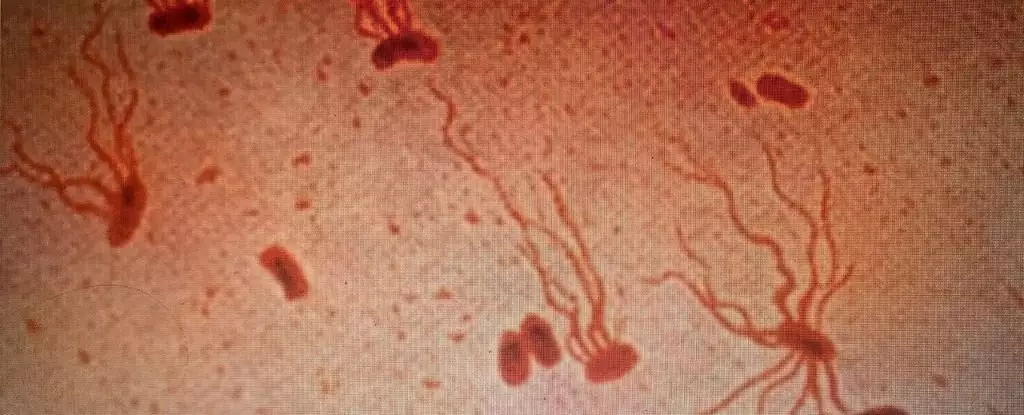Despite the significant advancements in medical science, typhoid fever persists as an alarming public health issue. Once thought to be a bygone threat in developed countries, the bacterium responsible for this disease, Salmonella enterica serovar Typhi (S Typhi), has begun a resurgence fueled by alarming levels of drug resistance. This ancient ailment, present in human societies for millennia, now presents an evolving challenge exacerbated by globalization and inadequate healthcare infrastructure in endemic regions. In an era that prided itself on scientific progress, the return of such a preventable disease is both unsettling and tragic.
The Stark Statistics of Drug Resistance
Recent research highlights a concerning trend: S Typhi is increasingly developing extensive drug resistance, turning traditional treatments into ineffective measures. A groundbreaking study from 2022 sequenced the genomes of thousands of S Typhi strains across South Asia and found a significant increase in what is classified as extensively drug-resistant (XDR) Typhi. The implications of this finding are dire. These XDR strains exhibit resistance to commonly used antibiotics such as ampicillin and chloramphenicol and are even beginning to resist newer classes of antibiotics like fluoroquinolones. The speed and breadth of this escalation in drug resistance pose a critical warning that cannot be ignored.
Emerging data suggest that nearly 11 million cases of typhoid are recorded yearly, with a disheartening fatality rate of up to 20 percent in untreated cases. This deadly potential, along with burgeoning resistance, sets a daunting stage for a potential public health emergency. The reality is clear: we are facing a bacteria that is not only surviving but thriving and rapidly mutating in response to medical interventions.
The International Spread of Typhoid Superbugs
As troubling as the numbers are, it’s the international dynamics of disease spread that raise even more alarm. While the majority of XDR Typhi cases originate from South Asia, including Nepal, Bangladesh, and India, these strains have increasingly made their way to more developed regions, including parts of Europe and North America. This unprecedented movement signifies that we are not merely fighting a localized problem; we are potentially on the precipice of a global health crisis. Almost 200 international cases have been recorded since 1990, reflecting an alarming trend that could turn the tide against decades of public health advances.
Infectious disease specialists stress the urgency of medical professionals and governments to respond proactively. Jason Andrews of Stanford University highlights this pressing need. The swift emergence of highly resistant strains mandates the development of broader prevention measures, especially in regions where the disease is endemic.
The Role of Vaccines as a Preventative Measure
One of the most encouraging tools we potentially have in this fight is vaccination. While education, hygiene improvements, and health infrastructures may be important, vaccination remains one of the most effective public health solutions. Typhoid conjugate vaccines have shown promise in preventing disease, especially in high-risk zones. There is evidence suggesting that urban vaccination could prevent nearly 36 percent of cases and deaths, particularly among younger populations.
However, there is no time to waste. Countries like Pakistan have pioneered the way by implementing routine immunizations against typhoid, serving as a model for others. However, the only way this initiative can gain global traction is through coordinated action among nations. Health experts are calling for a collective response to increase vaccine access, manufacture, and distribution. A failure to act could plunge us further into a crisis that, much like COVID-19, demonstrates how interconnected our world truly is.
The Dire Consequences of Inaction
The ramifications of ignoring the threat posed by drug-resistant typhoid may extend beyond health. Antibiotic resistance is already a leading cause of death worldwide, outpacing fatalities from diseases like HIV/AIDS and malaria. The loss of effective medical treatments risks not only individual lives but also the integrity of healthcare systems.
If the mutations observed continue, they could render even the last remaining antibiotics ineffective. The path to recovery from such a scenario requires substantial investment in both antibiotic research and development of new vaccines. Without sufficient funding and a focus on innovation, we might find ourselves cornered in a war against infections where our best weapons are useless.
The modern challenge posed by typhoid fever serves as a critical reminder of our vulnerabilities. The intersection of a persistent ancient disease with modern issues like globalization and antibiotic resistance is alarming. We stand at a crossroads, with the urgent need to fortify public health strategies and act against this evolving crisis. Ignoring it may soon unleash a wave of health catastrophes, taking us back to an era we thought was long over.

